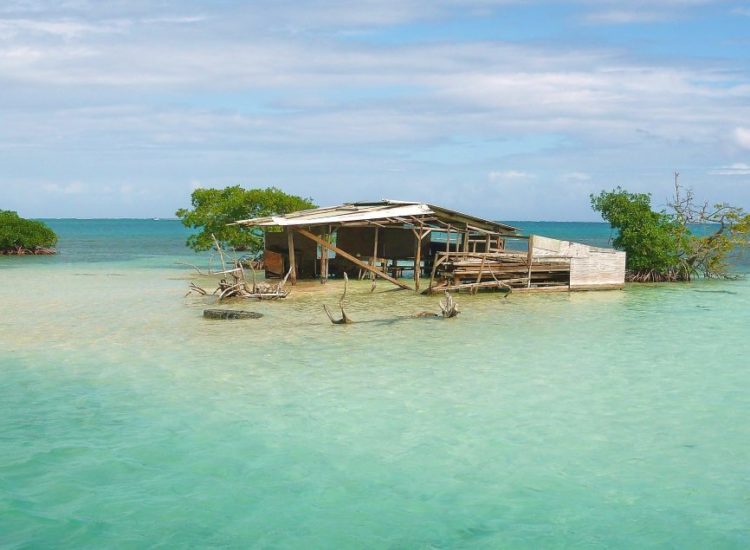As the international art world expands in scope, it seems like biennials are popping up in all sorts of obscure locations around the world. (Antarctica, anyone?) The Biennale de La Biche, however, which is being billed as the world’s smallest biennial, may be the most unique.
Kicking off a busy calendar of international art events for 2017, the offbeat art show, titled “In a land of,” opened on January 6 on the Ilet La Biche, a tiny spit of land off the coast of the main islands of Guadeloupe, a French overseas territory that is part of the Lesser Antilles in the West Indies. Surrounded by the crystal blue waters of the Caribbean Sea, the island offers what looks to be a stunning setting for contemporary art.
Founders and curators Alex Urso and Maess Anand have enlisted 13 participating artists (plus Urso himself) to take part: Karolina Bielawska (Poland), Norbert Delman (Poland), Michal Frydrych (Poland), Styrmir Örn Guðmundsson (Iceland), Maess (Poland), Ryts Monet (Italy), Jeremie Paul (France), Lukasz Ratz (Poland), Lapo Simeoni (Italy), Saku Soukka (Finland), Aleksandra Urban (Poland), Yaelle Wisznicki Levi (USA/Poland), and Zuza Ziołkowska-Hercberg (Poland).
Thanks to rising sea levels, the surrounding waters are gradually overtaking the island. In fact, when the curators came up with the idea (ahead of a trip planned for another reason), photos on Google showed the remains of a ramshackle structure, obviously abandoned some time ago, surrounded by a small amount of sand.
When the duo arrived, even that small island was in danger of being swallowed up by the sea. “There is no land, really,” Urso told artnet News in a phone interview. “You can walk around the structure but you walk in the water, basically.” The idea, he added, is that “each artwork will die on the island.”
Biennale de La Biche. Courtesy of Biennale de La Biche.
When the two spoke with locals about getting permission for the project, “the answer was there was no point,” said Urso. With no funding, they asked participating artists to donate their works, and to make sure they were all small enough to fit in a suitcase. The duo packed their luggage full of art, and flew to the Caribbean, not even paying to have the works insured.
Though the project obviously brings to mind the issue of climate change, the biennial’s theme is to create art that reflects transience and insecurity. They wanted, said Urso, “to push all the artists to somehow to relate to the idea of an unknown place.”
Since the project was installed earlier this month, Urso and and Anand have both flown back to Poland, where they live. “We just left all the artworks there,” Urso admitted. “We don’t know if people are going there or not.”
Regardless of attendance figures or the lack thereof, the pair have been fielding inquiries from interested artists from Guadeloupe, and are already considering staging a second edition in two year’s time.
“Maybe the next biennale could be bigger—or maybe the island won’t exist at all!” said Urso. “We don’t really have any expectations.”
